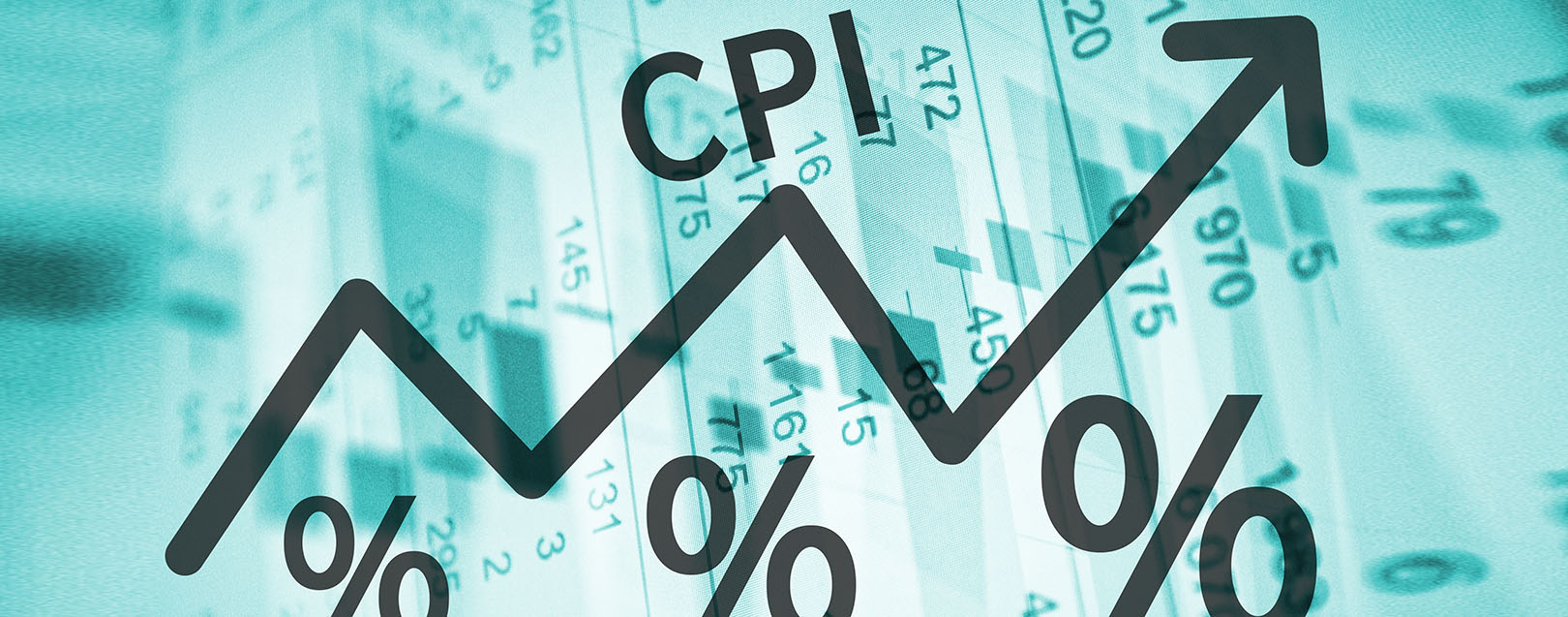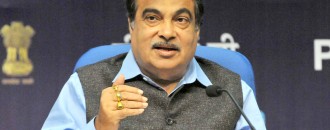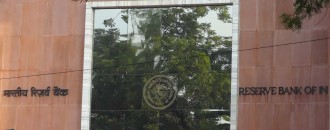
Glimpses from the week that was: March 12-18, 2017
By Abin Daya
The US Fed hiked interest rates by 25 bps this week, and also signalled that they would be increasing rates at least twice more this year.
The Fed rate hike was on expected lines, and there were more than enough signals from officials about the intended decision. They are feeling good about the economic growth, and are worried more about inflation than about growth. However, whether all those expectations will come to pass, we have to wait and see.
Closer home, inflation concerns are raising their head again and this will impact monetary policy going forward. The general perception is that RBI will hold the rates at the current level in the next monetary policy announcement in April. Again, need to wait and watch.
Again, back home, the decisive electoral mandate in favour of the BJP gave strength to the markets, and to the Rupee. INR appreciated by as much as Re.1.15 during the week, probably one of the strongest weekly rallies. Markets are hitting lifetime highs now, and there seems to be some more strength left in this market currently.
CPI and WPI inflation rise
- Both wholesale and retail inflation rose during February 2017 from their levels of January 2017
- WPI inflation increased from 5.25% in January to 6.55% in February, while CPI inflation increased from 3.17% to 3.65% during the same period
- A year ago, WPI and CPI inflation were at -0.9% and 5.3%, respectively
- While WPI inflation moved up for the third consecutive month, consumer inflation broke a 7-month declining trend to increase to its current levels in February

- The chart for wholesale inflation crossed that of retail inflation in December 2016, and extended the gap between the two further in February
- This is the third consecutive month that WPI inflation has stayed above consumer inflation, indicating significant increase in input costs for manufacturers which are not being passed on to retail customers
- One reason for this could be the pricing pressure faced by manufacturers due to reduced demand as a result of demonetisation
- However, some amount of lag in retail prices is understandable, and we have seen the first indication of rising consumer prices in the CPI inflation of February
- Considering the significant gap between WPI and CPI inflation, it is expected that the inflationary trend will continue as retail prices race to catch up with wholesale costs
WPI inflation
- The WPI moved up from 184.6 in January 17 to 185.5 in February, a movement of 6.55% y-o-y, highest in 39 months
- Wholesale inflation has increased significantly over the past 4 months, almost doubling from 3.38% in November 2016 to where it is now
- It is interesting to look at the major drivers behind such a steep movement

- Of the three major groups of items, manufactured products, with the highest weightage of 64.97, has remained relatively steadyover these past 4 months, moving up by a relatively low 17% between November 16 and February 17
- Inflation on primary articles, with a weightage of 20.12 and which comprise of food & non-food items and raw materials, hasincreased two-and-half times, from 1.95% to 5%
- Notable in this group is the inflation in Crude Petroleum, which has moved up from 3.6% in November to 42.2% in Feb – anincrease of 1080%!
- The other item which has contributed to the increase is Raw Cotton, where inflation has almost doubled from 17.4% to 30% during this period
- Food inflation, which had dropped from 2.1% in November to -0.77% and -0.56% in December and January respectively, rose back up to 3% in February
- While inflation on pulses (Arhar, Moong, Masoor, Urad) remained in deep negative levels, that of Barley, Ragi and Gram remained in double digits, as they have done so in the recent past
- What must have moved the needle for Food inflation would be coconut prices, where inflation moved from -14.9% in November to 22% in February
- Non-Food inflation also moved up from 0% in November to 6.53% in Feb, thanks to inflation in Copra, Castor Seed, Rubber and Flowers, apart from Raw Cotton mentioned above
- Inflation in Iron Ore, Copper Ore and Manganese Ore were the major contributors (apart from Crude Petroleum) which pushed up Minerals inflation from 5.85% in November 2016 to 31% in February 2017
- However, the most influence on WPI inflation during the past 4 months has been had by the product group with the least weightage, Fuel & Power, with a weightage of 14.91
- Fuel inflation almost tripled from 7.07% to 21.02% between November 2016 and Feb 2017

- High Speed Diesel, with the highest individual weightage of 4.67 amongst all products, saw inflation increasing from 19.26% to 33.1%
- Inflation on Petrol almost tripled in the past 4 months, from 5.5% to 16.7%
- The biggest movement was in Coking Coal, where inflation moved from 0% in November to 112% in February. Thankfully, the modest weightage of 0.38 limited the impact of this movement
- However, this increase in coking coal prices would be of significant concern to the steel industry, for whom this remains a critical input
- In fact, almost the entire basket of Fuel & Power articles exhibited significant movement
- Examples are ATF (14.1% to 67.3%), Naphtha (2.95% to 51.24%), Light Diesel Oil (-1.78% to 52.31%), and Furnace Oil (13.9% to 76.5%)
- While the comparatively lower weightage of the group limits the direct impact of Fuel & Power inflation on WPI inflation, the cascading effect due to the resultant increase in transportation costs and manufacturing costs creates a multiplier effect on inflation in other products
Retail Inflation
- CPI inflation increased from 3.17% in January to 3.65% in February 2017, a four-month high; during the same month last year, retail inflation was at a much higher level of 5.3%
- The increase happened on the back of inflation in food & beverages (1.37% to 2.46%) and fuel & light (3.34% to 3.9%)
- The increase in fuel inflation is in line with the effect on WPI inflation during February 2017
- Consumer Food Price Inflation increased significantly from 0.65% in January to 1.98% in February


- Deflation in vegetable prices has started easing, and has dropped from -15.6% in January to -8.3% on account of the on-going drought situation in many parts of the country; inflation on fruits has increased from 5.8% to 8.3% during the same period
- However, prices of pulses still are on a downward trend thanks to increased acreage during the last season, and deflation for this group has increased from -6.56% to -9%
- Considering the stressed production levels, and the likely drop in stock levels at the end of the year, sugar prices continued to rule high, with inflation remaining at double digit levels continuously for the past 10 months
- Inflation in sugar might come down by April-May when the high base effect starts to kick in
- CPI inflation is expected to trend higher at least in the immediate future, as the high input prices get passed on to the consumers going forward
- Also, the increasing levels of CPI and WPI inflation might not provide much comfort to RBI to cut rates, and we could be reaching the end of what was a very small cycle of rate reduction
Auto industry recovers from demonetisation blues
- Demonetisation impact seems to be over for the auto industry, particularly for the embattled Commercial Vehicles Segment
- Overall passenger vehicles grew at 9.06% y-o-y, selling 2.55 lakh units during February 2017, with UVs continuing the strong double digit growth that they have exhibited throughout the course of the year
- Commercial Vehicles grew at 7.44% y-o-y, compared to -0.72% in January, and even stronger declines during November and December 2016
- Two wheeler sales, a strong indicator of rural demand, has also recovered, with scooter sales coming back to the positive territory, after 3 months of being in the negative
Passenger Vehicles

- Utility Vehicles (UVs) have consistently maintained double digit growth all through the year, in this FY, remaining significantly above the growth rates of other categories
- While in the aftermath of demonetisation, y-o-y growth slipped to 10.07% in November 2016, it has recovered, and is at 22% for February 2017
- YTD Apr to February growth is significantly higher at 33.5% thanks to the 40+% growth during 4 out of the last 11 months
- However, UVs constitute only about 25% of overall passenger vehicle sales, and the major contributor is passenger cars with ~70% share
- Passenger car sales have grown by a modest 3.4% for the period April to February, as against last year during the same period
- Festival season saw sales growth improving to 15% y-o-y in September 2016, but demonetisation brought down growth rates soon after for this segment
- For the month of February 2017, passenger car sales grew 5% y-o-y to 1.73 lakh units
- Overall, passenger vehicles have grown at 9.56% y-o-y during the period April-February in this FY, selling 27.64 lakh units
Commercial Vehicles

- Out of the two major segments in Commercial Vehicles (CV), Medium & Heavy Commercial Vehicles (M&HCVs) clocked 5.3% y-o-y growth in February 2017 by selling 30,581 units, while LCVs grew at 9.3% y-o-y
- Overall, 66,999 CVs were sold in February, as against 62,359 CVs in the same month last year, translating to y-o-y growth of 7.4%
- For a large part of the year, though, CV sales have remained depressed, and in 4 out of the past 11 months, have recorded negative growth
- For the April-February period of the current FY, overall CV sales have grown by just 2.12% y-o-y; M&HCV sales remained almost flat during this period, while LCV sales grew slightly better at 3.9% y-o-y
- The pick-up in mining activity will add legs to the M&HCV story and this could improve the outlook for this segment going forward
Two wheelers

- Two wheeler sales numbers are closely tracked as they are a strong indicator of rural consumption demand
- Out of these, demand for scooters and lower calibre motor-cycles are better connected to the rural markets
- Demonetisation had significantly affected two-wheeler sales numbers over the past three months, but the effects seem to have worn off now
- FY17 sales had declined y-o-y by 23.9% in December 2016, but have now recovered sufficiently to end at a marginal decline of -0.83% in February 2017
- Sale of scooters have recovered back to the positive territory at 3.7% y-o-y growth, after three months of negative growth, while MC numbers are still in the negative with -3.1% growth
- Impact of demonetisation was felt most in December 2016, when scooter sales dropped y-o-y by 26.4%, and MC sales declined by 22.5%
- For the April-February period of the FY, scooter sales grew by 11.7% y-o-y, while MC sales achieved 4.4% growth; overall two-wheeler sales grew by 6.7% y-o-y
Significant growth in excise duty bolsters revenue numbers
- Indirect tax collections have achieved 98.5% of their Budget Estimates, thanks to strong growth in Central Excise revenues
- Direct tax collections are currently at 73% of full year targets as of February 2017, but might still achieve Budget Estimates

- Looking at the different components of indirect taxes, the government has so far collected Rs.3.45 lakh crores (L Cr) as excise duty, between April-February of the current FY, which is 55% more than what was collected during the same period last year
- This strong growth in Central Excise revenues have come from increase in excise duty on fuel, which has increased from Rs.9.48 per litre to Rs.21.48 per litre for Petrol, and from Rs.11.33 per litre to Rs.17.33 per litre for Diesel
- Excise duty collections have already crossed their yearly target of Rs.3.19L Cr and with one more month to go in this FY, are at 108% of target
- Even service tax collections have exhibited a healthy growth of 30% y-o-y during this period, and are at 96% of Budget Estimates, indicating that targets will be met by the end of the year
- Against Budget Estimates of Rs.2.31L Cr, the government has collected Rs.2.21L Cr as service tax revenues so far in the year; during the same period last year, collections were at Rs.1.7L Cr
- However, customs duty collections might miss the targeted figure of Rs.2.3L Cr, as Apr-Feb collections are at only 89%
- As against Rs.1.94L Cr collected as customs duty last year, this year collections have touched Rs. 2.05L Cr, an increase of 5.8%
- Considering that customs duty recovery is now averaging Rs.18,000 Cr a month, and also considering the pick-up in foreign trade, we might see the year-end figure at about Rs.2.25-2.27 L Cr, marginally below the target (there is no historical data to suggest a significant spike in customs duty collections in March)
- As far as direct taxes go, the gap between target and collections so far is significantly huge – about 27%
- However, there is significant amount of revenue recovery that happens during March, and we may yet see the numbers crossing the Budget Estimates
- Direct tax collections in March 2016 amounted to Rs.1.8L Cr, almost 37% of the total direct taxes collected during the FY
- Based on the same, it might be prudent to assume that numbers will cross the target this year too
Credit growth slows down for banks

- Credit demand has significantly slowed down in the economy, leading to a slow-down in credit offtake from banks over the past three months, as per RBI data
- For the fortnight ending 03 Mar 2017, y-o-y growth of non-food credit slowed to 4.8%, a multi-decadal low
- Credit growth for the fortnight ending 04 Mar 2016, a year ago, was at 11.5%, indicative of the heightened activity during the last quarter of the FY
- Banks added non-food credit worth Rs. 147,930 Cr in the first 8 weeks of the calendar year, ~8% lower than Rs. 160,390 Cr added during the same period last year
- This reduction in credit offtake has come at a time when lending rates of banks have fallen due to the huge deposit inflows as a consequence of demonetisation
- Banks are increasingly facing asset quality concerns due to the economic slow-down, which puts pressure on the loan servicing capability of corporates
- Considering the present state of the economy and with revival of consumption demand yet to happen, it is difficult to imagine credit demand reviving anytime soon.
Some numbers to note*
*figures in brackets indicate movement during the week
- FX reserves: $364.11Bn as on Mar 10, 2017, as against $364.01Bn in the previous week (+$99Mn)
- USD/INR: Rs.65.4550/$ (INR appreciated by Re 1.15)
- Indian Crude Basket: $50.76 (-2.6%)/Rs.3,318.91 (-4.60%)
- Equity Markets: Sensex 29,648.99 (+2.43%); NIFTY 9,160.05 (+2.52%)
- LIBOR: 6 Mths – 143 bppa; 12 Mths – 181 bppa
- MIBOR: Overnight – 6.18; 1 month – 6.55; 3 months – 6.52
.jpg)





 to success.
to success.